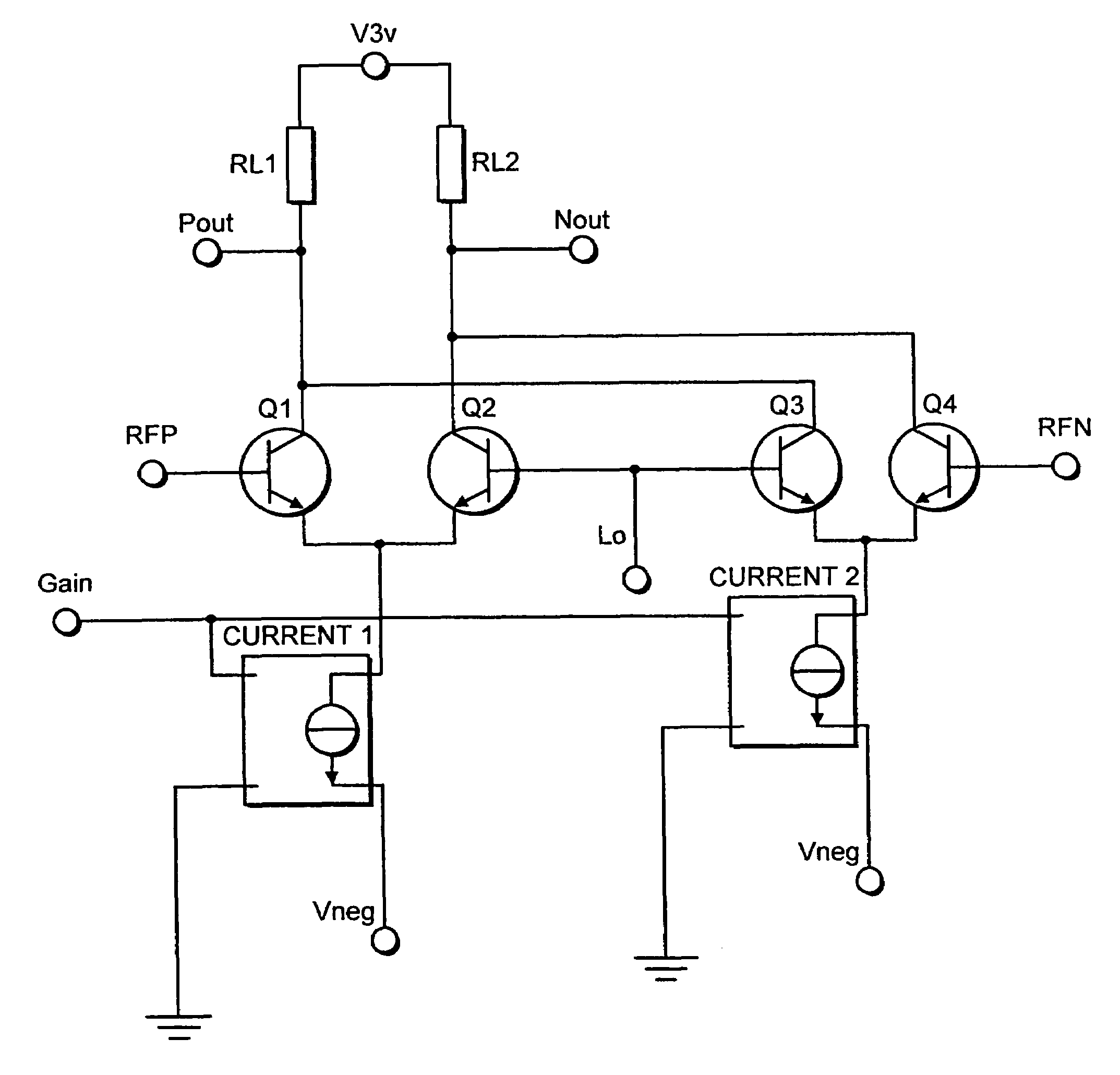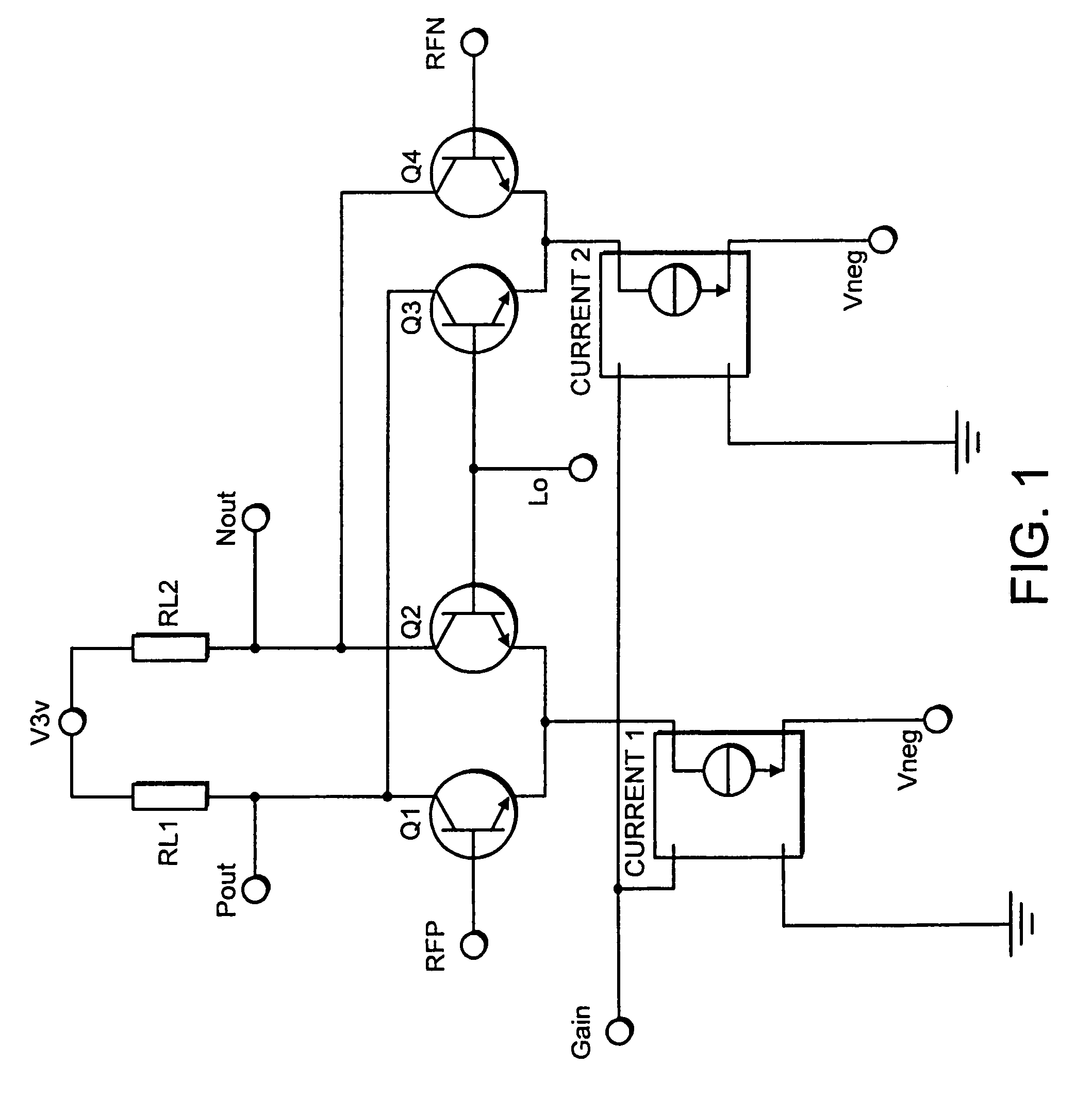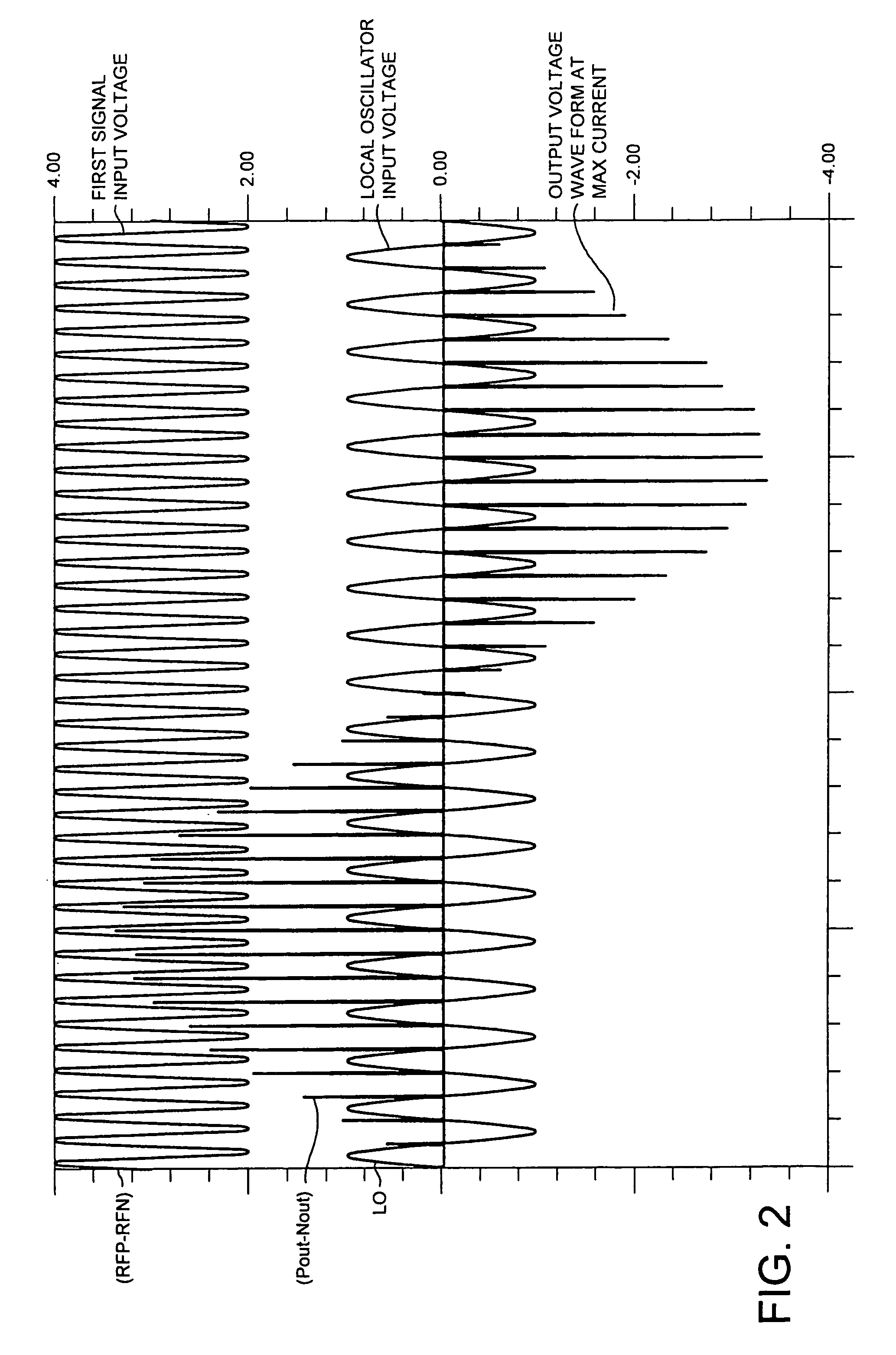Transmitter and a modulator therefor
a technology of modulator and transmitter, which is applied in the direction of transmission, antenna, amplification control details, etc., can solve the problems of generating 90 phase shift, inherently limited to substantially narrow band applications, and difficult to integrate such networks onto an ic, and achieve high local oscillation
- Summary
- Abstract
- Description
- Claims
- Application Information
AI Technical Summary
Benefits of technology
Problems solved by technology
Method used
Image
Examples
Embodiment Construction
[0024]Referring initially to FIG. 1 there is shown an exemplary modulator circuit diagram of the present invention. In this circuit a suitable power supply is connected at V3v ie. 3 volts. The power supply V3v is connected to the output loads of the modulator circuit, the load being represented by resistors RL1 and RL2. These however may be reactive, resistive or active whichever is most suitable in the application. The output loads RL1 and RL2 are connected respectively to Pout and Nout which are the differential outputs of the modulator circuit. The signal present between Pout and Nout is the modulated radio frequency carrier. In the case of an ‘I / Q’ modulator this differential output would be summed with the differential output of a second modulator. The summed output would then be passed to the next stage of the transmitter.
[0025]Pout and Nout are coupled to the transistor network forming the switching means of the modulator circuit. The transistors Q1,2,3,4 are shown as bipolar...
PUM
 Login to View More
Login to View More Abstract
Description
Claims
Application Information
 Login to View More
Login to View More - R&D
- Intellectual Property
- Life Sciences
- Materials
- Tech Scout
- Unparalleled Data Quality
- Higher Quality Content
- 60% Fewer Hallucinations
Browse by: Latest US Patents, China's latest patents, Technical Efficacy Thesaurus, Application Domain, Technology Topic, Popular Technical Reports.
© 2025 PatSnap. All rights reserved.Legal|Privacy policy|Modern Slavery Act Transparency Statement|Sitemap|About US| Contact US: help@patsnap.com



